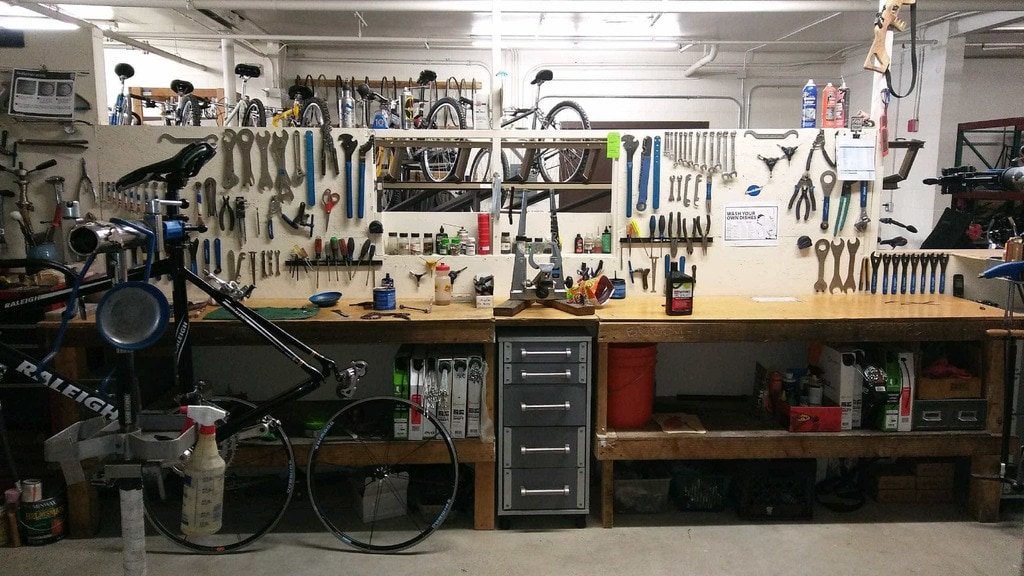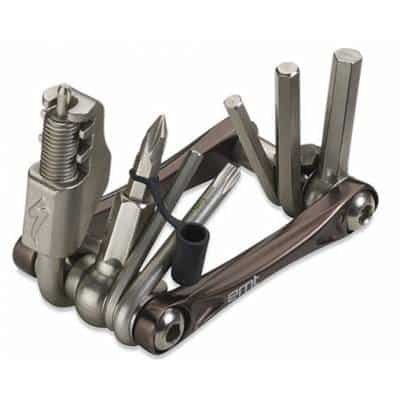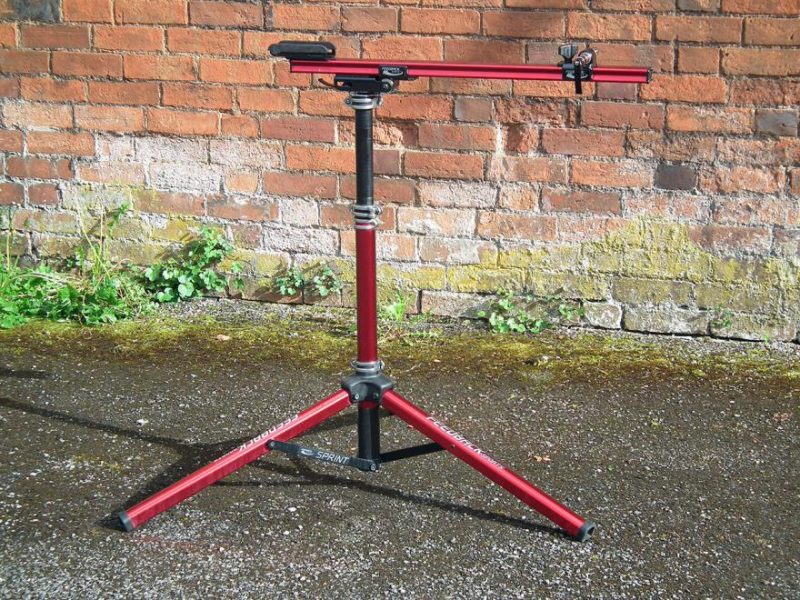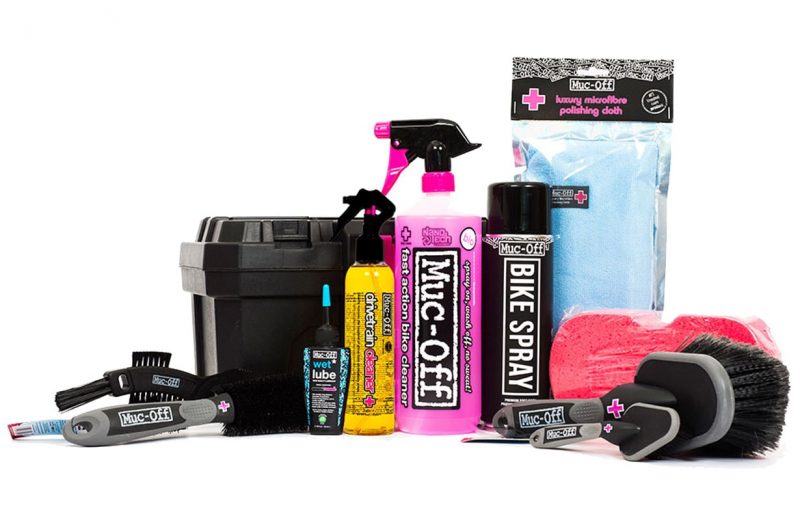Care & Maintenance, Cycling Tips -
How to Find and Fix the Annoying Bike Creaks and Squeaks
Cyclists consider their bicycle a friend, their partner, a loyal steed to carry them to unknown places on exciting adventures, or maybe just to work. Like any good companion, you can usually tell when something’s wrong.
It may start with a faint tick, squeak, or creak that turns into constant knocking or some other noise that quickly drives you crazy. Nothing seems to be the apparent cause, you’re at a loss. That’s why it’s always a good practice to do a quick bike inspection before a ride.
The noises can come from many locations on the bike. Carbon bikes are even worse as they might sound like they’re coming front the front but in fact, they’re from the rear, and vice versa.
On this page, I’ll be sharing the 11 most common places to start looking for the creaking noises. I’ve ranked them by the difficulty level to solve. For most cyclists, you can easily solve 1 to 4 with basic bike maintenance skills, and you may need the help of your local bike shop for 5 to 10 as you might not have the necessary bike repair tools.
So let’s get started.
1. Bike Chain
The very first place to look is your chain.
When was the last time you cleaned and lubed the chain?
As you ride, the chain links interact with the chainring, cassette, and pulley wheels resulting in metal-to-metal contact. A dry chain (especially after riding in the wet) is the main and most common culprit to the annoying squeaking noises.
If you have time, clean the chain thoroughly using a chain degreaser. Otherwise, lube the chain and do the cleaning later.
2. QR Skewers and Thru-axles
Depending on the model year, your bicycle’s wheelset may have QR skewers or thru-axles. They are an important component and not something you should ignore.
Remove your skewers/thru-axles and give them a good look.
Are they black with goo and grease?
Or perhaps dry as a bone and showing a few oxidized patches?
Bring them back to life with a good scrub (dish soap and water are fine), dry them thoroughly, and apply a thin layer of grease to the rod and threads before reinstalling.
3. Water Bottle Cage Bolts
Water is an essential element to the life of any cyclist. Some carry it on their back, while the rest of us prefer our old friend the water bottle. We tug on the water bottles in all directions to remove them and slam them back when we’re done as we try to hang onto the bunch. In the end, cages take a lot of abuse.
That abuse travels through the water bottle cage down to the bolts which loosens them over time. Maybe they just need to be tightened.
Unless it’s a custom build bike, most shops don’t take the time to grease cage bolts during the assembly process.
So, while you’re there, remove them to check and a little dab of grease will do ‘ya. If they still rattle, it might be a bigger problem.
4. Pedals and Cleats
Today’s road bike pedals are so reliable, they’ve become a component that riders install and forget. The same goes for cleats, but at least their wear is visible. When was the last time you gave them a good look?
If grease was applied on the spindles and bolts during installation, chances are high it’s long gone.
Remove your pedals and examine the threads on the spindle and crankset. Clean them before applying fresh grease and reinstalling (hand tight is sufficient for your pedals-no need to mack down!).
Cleats can be noisy too. Remove the bolts from your cycling shoes and wipe them clean before adding a smudge of new grease on the threads and reinstalling.
Remove any debris or dust from the pedals and cleats. Get a dry, clean rag and apply some lightweight silicone spray or wax-based furniture polish onto it and wipe them both down.
Don’t forget to check your cleat bolts, they may need to be tightened to about 4-5Nm using a torque wrench if you have one.
5. Stem and Handlebar
The stem and handlebar are a pair with plenty of metal-to-metal contacts. From my experience, you’ll hear a click or a tick around where the stem attaches to your fork steer tube, or at its other extremity where the handlebars are attached. Mark the precise location of your handlebars before removing the end cap.
Clean all the surfaces and apply fresh grease on the threads before putting everything back in place. Tighten the end cap in a cross pattern, in two or three passes.
The same goes for the pinch bolts on the fork steerer clamp, secure each one little by little until tight. For best results, use a torque wrench set to the value shown by the bolt.
6. Saddle and Seatpost Clamp
Have you noticed the noise occurs as soon as you sit on your bike saddle?
If so, it could come from the seat post clamp or the saddle rails. Our entire body weight rests on the saddle clamp, a remarkable engineering feat for such a modest component. It’s made up of a lot of small parts that move and grind as we pedal along.
Mark your saddle position with a pen or tape.
Clean off any exposed surfaces before spreading a sparse amount of grease onto your saddle rails, the rail beds, and the threads of any bolts you can access in the clamp before reinstalling.
Are your rails made of carbon?
Read the label on your grease before applying it to verify it’s carbon safe.
Read More : Road Bike Seatposts Explained
7. Loose Headset
The cups of your headset are installed in the frame by force, a perfect storm of metal on metal that is a common cause of noise. There are many other points of contact in a headset too, you’ll have to remove the parts you can to wipe them clean and cover them in new grease before reinstalling.
Check the cups too, are you able to twist them in the frame with your fingers?
If so, this might be the source of your noise or the sign of a bigger problem that needs to be inspected by a qualified mechanic.
A last recourse is to remove the cups, clean around their outsides and inside the frame before adding a smear of grease and reinstalling.
8. Cassette Lock Ring
I have personal experience with this one. I spent hours searching for the source of noise on my bike, pulling my bottom bracket, greasing and tightening every bolt until I checked my cassette lock ring.
It’s not an obvious offender as my bike was shifting just fine. It only needed a quarter turn and the noise was gone.
Remove your rear wheel and check your lock ring. Does it move?
Can you dislodge it with finger strength alone?
Even if you can’t, grab your cassette tool and remove it. Inspect the lock ring threads and those on the cassette for damage or dryness. Make sure they are clean then add a speck of grease and reinstall.
Read More : When Should I Replace My Bike Chain?
9. Rattling Cables
Internally routed cables have been around for a while now. What your bike has varies on the model and level.
In most cases, even if your cables pass on the outside, the frame may be internal-cable ready if you see unused entry and exit points that are blocked up. Be it inside or outside of the frame, rattling cables are a nuisance.
Cables that hit each other or whack against the frame (inside or out) are common. I use small strips of electrical tape spaced a few centimeters apart to hold mine together.
Wrap a bit around the portion of housing that strikes the frame too to dampen any noise. Cable ties are another option, but to me, that’s one more thing to strike against the frame.
For internal cables, noises usually come from the entry and exit points. Give them each a jiggle to find your culprit. Once you’ve found the source, block up the entry with a small piece of foam or weather stripping, or follow this DIY method.
If those fail, internal hose dampening kits exist, but you’ll have to disconnect all of your cables to install them.
10. Chainring Bolts and Spider
The bottom bracket isn’t the only spot down there susceptible to creaking. Think of the sweat, sticky hydration drinks and moisture that drip down and work their way into your chainring bolts and spider as you hit those pedals.
Similar to bottom brackets, chainring bolts aren’t normally greased directly from the manufacturer, they leave it up to you.
Remove the bolts you can to free the chainrings. Some may be pressed or riveted onto the spider. Clean and re-grease the chainrings and bolt threads, adding a dot to where the chainrings meet the spider before you reinstall.
Where two surfaces meet, drip some Loctite into the permanently bonded spaces and dry overnight. If loose chainring bolts are chronic on your bike, use Loctite on their threads too instead of grease.
12. Bottom Bracket
The knocking sound from a bottom bracket in distress is a bother you’ll want to remedy as quickly as possible. Before you remove it, check your crank bolt on both sides to make sure it’s tight as this sound is similar to one caused by a problem bb.
It’s tight?
Okay, then on to Plan B, removing your bottom bracket.
Is yours threaded or a press fit?
You’ll need special tools, but I’ll leave that to you. Once free from your frame, inspect your bottom bracket shell and threads for any damage. Clean the separate components thoroughly and apply a fresh layer of grease before reinstalling. For best results, use a torque wrench and tighten to manufacturer specifications.
If your bb is a press fit, once the bearings are removed, wipe your shell and the bearing cartridges clean. Smear grease around the inside of the shell and the outside of the cartridges and reinstall. If that doesn’t work, you may need some retaining compound that will slightly expand and take up any space causing that irritating creak.
Author Recommended Reads




